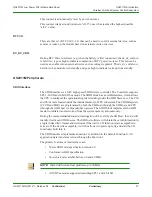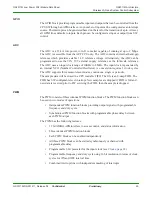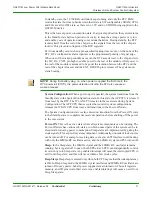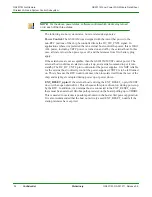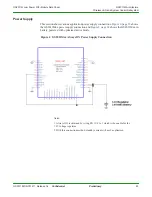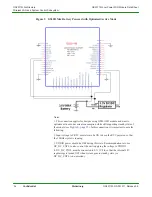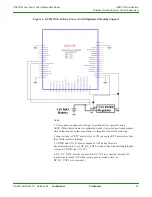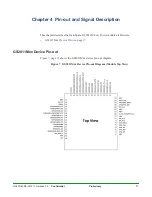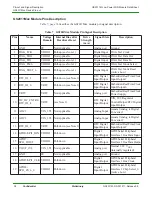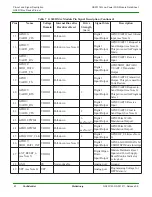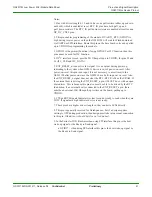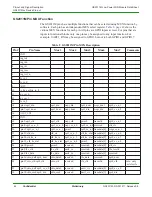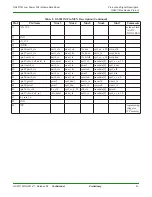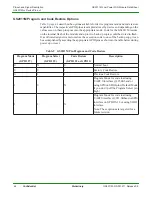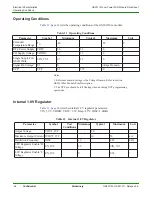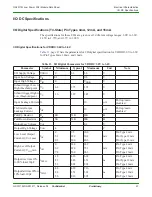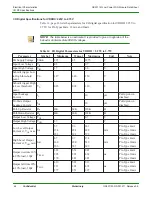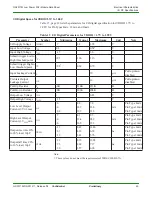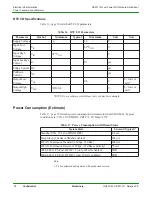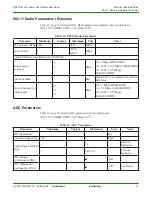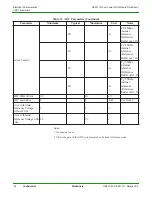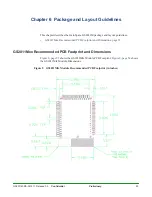
GS2011M Low Power WiFi Module Data Sheet
Pin-out and Signal Description
GS2011Mxx Device Pin-out
GS2011M-DS-001211, Release 0.9
Confidential Preliminary
41
Notes:
1. Pins with drive strength 4, 12, and 16 have one pull resistor (either up or down,
not both), which is enabled at reset. RTC_IO pins have both pull_up and
pull_down resisters. The RTC_IO pull down resisters are enabled at reset for non
DC_DC_CNTL pins.
2. This pin enables programming of the module. If UART1_RTS (GPIO27) is
high during reset or power on then the GS2011M will wait for Flash download
via UART0 or SPI0 interface. Route this pin on the base board so it can be pulled
up to VDDIO for programming the module.
3. GPIO29 is the primary function; if using GPIO8/9 as I2C function, then this
pin cannot be used for I2C function.
4. If I
2
C interface is used, provide 2K Ohm pull-ups, to VDDIO, for pins 25 and
26 (I2C_CLK and I2C_DATA).
5. EXT_RESET_n is an active low signal. It is an output during power up,
indicating to the system when GS2011 device is out of power-on-reset. After
power-on-reset, this pin is an input. It is not necessary to assert reset to the
GS2011M after power on, since the GS2011 has a built-in power on reset. Also,
the EXT_RESET_n signal does not clear the RTC, RTC RAM, or the SRAM. If
the external host is driving the EXT_RESET_n pin, it MUST do so with an open
drain driver. This is because this pin also must be able to be driven by the RTC.
In addition, if an external host is connected to the EXT_RESET_n pin, there
must be an external 10K Ohm pull-up resistor on the board, pulling up to
VDDIO.
6. CTS and RTS signals indicate it is clear to send or ready to send when they are
LOW. If signals are high indicates device is not ready.
7. These pins have higher drive strength so they can drive LEDs directly.
8. This pin is generally reserved for GainSpan use, but if a design requires
writing to OTP during production, then design must take into account connection
to this pin. Otherwise, it should be left as a No Connect.
9. In the Serial-to-WiFi firmware when using SPI interface this pin is the host
wake-up signal or the Ready to Send signal.
a. GPIO37 - when using SPI interface this pin is the host wake-up signal or
the Ready to Send signal.

